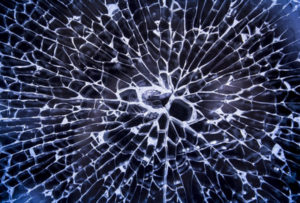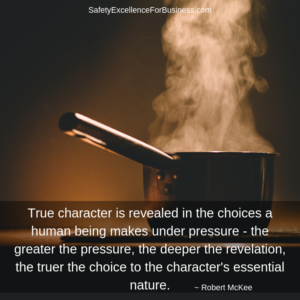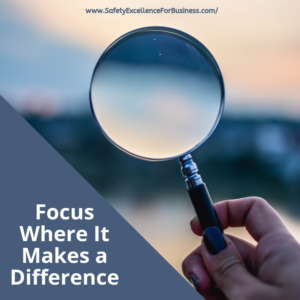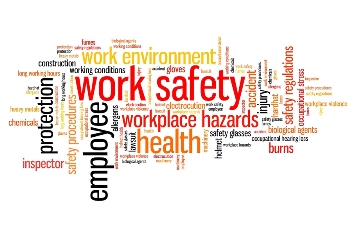Our society is fracturing into so many disconnected and angry parts. At every level of society and even in our workplaces, we see this happening every day.
 Our businesses, our schools and hospitals, our governments, and not-for-profits, at all levels, are fractured and coming apart. Change is coming faster and faster. So many people seem to be trying to cope by pulling into their shells and trying to push the turmoil all away. The trust levels among all the various groups is very low. So many loud voices are pushing their version of the “truth” that it is almost impossible to tell who is being honest and should be listened to. How do we find the truth?
Our businesses, our schools and hospitals, our governments, and not-for-profits, at all levels, are fractured and coming apart. Change is coming faster and faster. So many people seem to be trying to cope by pulling into their shells and trying to push the turmoil all away. The trust levels among all the various groups is very low. So many loud voices are pushing their version of the “truth” that it is almost impossible to tell who is being honest and should be listened to. How do we find the truth?
The connection to physical and psychological safety…
When problems like these come into our workplaces, people do not feel psychologically or physically safe. The distractions pull people away from focusing on their work. This can lead to injuries and incidents, as well as to lower productivity. This is expensive both in terms of the impact on the people and the business. Working in a place like this, where the pressure for production is intense, can feel like we are living in a pressure cooker.
When connections breakdown…
Mary Eberstadt, in her 2019 book, Primal Screams, suggests that people are basically social animals and that our connections are broken. A lot of our problems in society are the result of people having lost their sense of identity. Changes in how families function, or not, changes in where people live and work and move away from their roots, changes in the way the internet seems to be dividing us and making people feel scattered and lonelier, changes in the role of churches and other centers of moral guidance like more fathers in our homes, and the political strife blocking our ability to talk about the real issues are some of the concerns she raises.
We’re not helpless – we can make some important choices…
We do not have to be helpless victims. We can make choices about how we agree to work together. We can choose to…
- be respectful of one another,
- be aware of people who are bullying or harassing others and speak up about this,
- listen to each other,
- learn from each other,
- look out for each other and be our brothers’ and sisters’ keepers,
- learn from our successes and our mistakes,
- give each other the benefit of the doubt and not jump to judgement,
- talk together about how to improve our jobs,
- talk about our differences and figure a way through them,
- create a safe space where it is okay for people to ask questions and provide feedback, and
- help each other to be successful.
There are many things we can do in our workplaces to build a sense of community that is safe and productive.
What if…?
 In thinking about your own place of work, what do you suppose it would be like if people did some of the things mentioned earlier in this newsletter? Do you think that you could begin talking with others about building a more respectful environment? What do you think it would be like if you could openly talk together about the important issues like improving the safety of your job? What would it be like if the managers and supervisors talked frequently about with everyone about how the business was doing the challenges from the competition? What would it be like if you knew that someone was looking out for your back? What would it be like if you felt you were in an environment of trust? What would it be like if people really asked important questions and talked about them? What would it be like if people in upper management asked you for your honest opinion and really listened? That’s called breaking the iceberg and engaging in authentic conversations!
In thinking about your own place of work, what do you suppose it would be like if people did some of the things mentioned earlier in this newsletter? Do you think that you could begin talking with others about building a more respectful environment? What do you think it would be like if you could openly talk together about the important issues like improving the safety of your job? What would it be like if the managers and supervisors talked frequently about with everyone about how the business was doing the challenges from the competition? What would it be like if you knew that someone was looking out for your back? What would it be like if you felt you were in an environment of trust? What would it be like if people really asked important questions and talked about them? What would it be like if people in upper management asked you for your honest opinion and really listened? That’s called breaking the iceberg and engaging in authentic conversations!
YOU CAN MAKE THAT POSITIVE DIFFERENCE!
Each person can make a positive difference, if they decide to do it. It is a matter of will. If you do not step forward to make our workplaces safer and more productive, who will?
There must be people with whom you can partner and begin these focused conversations. These do not have to be big projects. Start slowly and spread it as it grows. Change happens one conversation at a time!
I would be glad to talk with any of you about building Partner-Centered Leadership with you. Please call me at 716-622-6467.
Partner-Centered Leadership – You don’t have to live like a pressure cooker!
There is a “workable pressure relief valve” already available to us to release these stress levels! It’s called Partner-centered Leadership.
The need for open, honest, disciplined, constructive dialog is critical. It is through these sorts of continuous conversations that people and organizations change. The positive energy for continuous improvement builds one conversation at a time over and over. Showing respect and caring for both the people’s mental and physical health, as well as for the success of the business, is critical. The business can’t succeed without the creativity and energy of the people and the people’s jobs can’t survive without excellent business performance.
 There seems to be an interesting disconnect here. OSHA does focus on falls, but what about roadway deaths and homicides? These are serious workplace problems as well. What about the whole problem of workplace violence that begins with the lack of respect (bullying, harassment), and that can lead to serious business problems like poor productivity, high absenteeism, fighting, injuries, murder, and suicide?
There seems to be an interesting disconnect here. OSHA does focus on falls, but what about roadway deaths and homicides? These are serious workplace problems as well. What about the whole problem of workplace violence that begins with the lack of respect (bullying, harassment), and that can lead to serious business problems like poor productivity, high absenteeism, fighting, injuries, murder, and suicide? OSHA recently reported that there were about 5,190 workplace fatalities in 2017. This is almost a 7% increase over 2016. I expect that this partly reflects the higher levels of business activity and more people who are working. Still, every single number reflects a personal tragedy – the death of a worker.
OSHA recently reported that there were about 5,190 workplace fatalities in 2017. This is almost a 7% increase over 2016. I expect that this partly reflects the higher levels of business activity and more people who are working. Still, every single number reflects a personal tragedy – the death of a worker. Hardly any of us can do our best work all by ourselves.
Hardly any of us can do our best work all by ourselves.




